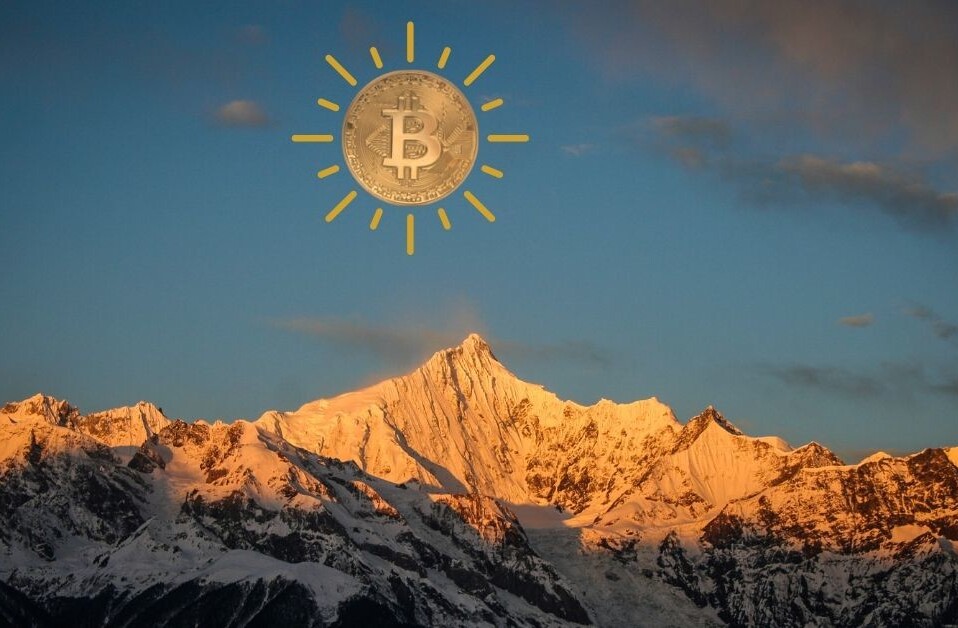
TL;DR There are a few blockchain supply chain use cases which have the potential to restructure the industry. One particularly impactful use case is making it easier for small suppliers to get more financing on better terms.
Most of the blockchain applications emerging right now are effectively porting existing solutions onto the blockchain (Uber for the blockchain, Airbnb for the blockchain, etc.).
While these projects are valuable, the “killer apps” of previous technological transitions have not just been simply porting over an existing use case and making it more efficient. They reimagine how the new technology could transform the way the industry works in some fundamental way.
Amazon was not just Walmart on the internet; it took advantage of the zero marginal cost of shelf space to offer a much wider selection than Walmart could ever stock in physical stores.
Google was not a giant Dewey Decimal catalog of websites; it took advantage of the web’s hyperlinked, crawlable nature to facilitate more efficient searches and information discovery.
There’s every reason to think that the same will be true of the blockchain. The killer applications will reimagine how the world works in a fundamental way.
I don’t pretend to know what these killer applications will be, but one of the most promising ideas I’ve heard is applying the blockchain to the supply chain to tokenize existing assets. This would allow any business to place their existing assets (like real estate, physical inventory, etc.) on the blockchain and borrow against those assets at extremely low-interest rates and fuel their growth.
If it works, this blockchain supply chain use case has the potential to disrupt a multi-trillion dollar industry and dramatically shift the corporate landscape.
Utility tokens are multi-billion dollar opportunity but tokenized securities are multi-trillion dollar opportunity.
— Pomp ? (@APompliano) January 24, 2018
We are years, if not decades, away from this application being mainstream, but it is the sort of use case which I think shows the true potential of the technology.
We’ll take a quick look at the history and current state of the supply chain industry then jump into how the blockchain could reshape it.
A brief history of supply chains
The Industrial Era started with a centralization of production. Fordism, mass manufacturing, and Taylorism all helped make centralized production more efficient.
This centralization took the form of large factories where raw commodities were turned into finished goods. Ford produced all their cars in a small number of factories which took in rubber and steel and spit out finished cars.
After World War II, there was a second phase where corporations moved to centralize not just production but financialization.
By demanding favorable terms from their suppliers, corporations became banks that could access cheap sources of capital and distribute it to areas where other factions, like small businesses in developing countries, can’t compete because their cost of capital is much higher.
The third phase was the centralization of risk. The belief was that by using hedge fund thinking, it was possible to have zero risk because it was all hedged away. They believed that if one part of their portfolio went down, another part would go up.
At the dawn of the 21st century, these large corporations thought they had all the money with no risk.
However, the centralization premise only works as long as you don’t get a large shock to the system. If you get too large of a shock to the system, then there’s a contagion, and you get the 2009 Global Financial Crisis.[1]
Today, the supply chain industry accounts for 2/3rds of global GDP (about $54 trillion globally) and employs the majority of people worldwide.
The primary inefficiency in the industry is a result of the relatively high levels of centralization. The largest players (e.g., Walmart or Starbucks) demand favorable terms from suppliers because they control massive amounts of purchasing power.
This means that as you move closer to the players in the fringes of the supply network, the more strapped for cash they are. They are extending favorable terms to larger players and usually can’t get a loan. However, the fringes are where the majority of the growth potential is and where that growth would make the biggest difference.
For example, the small coffee farmer in Africa can’t expand his farming because he has to give favorable terms to the import/export company, which has to give favorable terms to the roasting company, which has to give favorable terms to Starbucks.
Starbucks may be able to get access to $1 billion at a 3% interest rate, where the coffee farmer in Africa can only get a $500 loan at a 20% interest rate. Then, Starbucks can invest in something that requires $1 million up front and has an expected rate of return of 10%. The coffee farmer can’t get a large enough loan to expand her farm, and even if she could, it wouldn’t be profitable at the interest rate she is paying.
The end result is that all the capital is sitting with Starbucks, which has a relatively low ability to grow it, whereas the small business farmer has high compounding potential but no access to capital.
Centralization was effective in a more stable environment, but in an unstable and fast-changing environment, smaller and less centralized is more adaptive and has better “economic fitness.”
In today’s world, economies of scale in the supply chain are getting less beneficial at best, or counterproductive at worse.
I want money, that’s what I want

According to economist Ronald Coase, as information gets better distributed, then the size of companies should come down and we should see a supply chain composed of smaller, nimbler companies that are better able to adapt.
This has happened to some degree. More and more companies are outsourcing parts of their supply chain using outsourcing firms or online freelance marketplaces like Upwork.
However, the shift has been much slower than would be optimal for overall economic growth because larger companies are using their access to cheap capital to buy smaller companies and then making them less efficient.
Capital has the upper hand because it is relatively scarce: there is way less money than valued assets.
There is about $700 trillion worth of valued assets in the world but only about $70 trillion of fiat and maybe another $100 trillion of things like stocks and bonds.[2]
That means people are competing for access to that $170 trillion of money (fiat, stocks, and bonds).
In the supply chain, that money needs to go from the big companies to the medium-sized ones to the individual coffee farmer.
Blockchain technology creates the possibility of filling the gap between the amount of money available and the number of valuable assets using tokenization.
This would give the smaller, high-growth players at the fringes of the network, like the coffee farmer, access to capital at a very affordable rate.
The blockchain supply chain use case
Historically, it was possible to take an asset you owned, like your house, to some entity that would issue a soft currency not backed by gold or some other hard asset. This might have been a bank issuing their own script in the Middle Ages or the pharaoh a thousand years ago giving you a hieroglyphic tablet.
This is effectively what tokenization does. However, the major difference enabled by blockchain technology is that once your house is on the blockchain, and there are many decentralized nodes maintaining the ledger, then the bank that issued the script no longer needs to be trusted.
Here’s how this would work. Let’s say you wanted to take out a loan from the equity you have in your house. You would make a legal agreement that puts your house on the blockchain, with a clause that the title will transfer to your creditors if you don’t pay back your debt.
You can then mint your own tokens on the blockchain using your house as collateral.
You would pay some trusted intermediary to get the asset on the blockchain, but once it is on the blockchain, then there is a contract that says, “I can’t sell my house without paying back all the tokens I took out.”
You can then go trade those tokens for other tokens or fiat or another commodity that you think is a better use of that capital. And you, the individual, aren’t paying interest because there is no trusted third party like a bank. You are taking out the loan from yourself, so you don’t need to pay yourself interest like you would pay a bank if you took out a mortgage.

This same mechanism could be done for all asset-backed lending. All $700 trillion of the valued assets in the world could be converted into asset-backed currency, creating much more liquidity and increasing the velocity of money to the edges of the network where it is most needed, like the African coffee farmer.
Imagine the coffee farmer knows she can increase her crop yield by 30% if she can buy a new piece of equipment. Right now, she can’t get access to capital to invest in that equipment. However, if she could take out a loan on the blockchain against her existing farm, she could buy that new piece of equipment, increase her yield, and pay back the loan from her increased profits.
This would enable commerce to happen without possession of fiat currency, which is scarce relative to the total value of assets.
The transparency of the blockchain would also remove a large amount of risk to capital providers. The entity loaning money for the new piece of farm equipment can already see on the blockchain an order from Starbucks to buy the coffee so that they can lend at a much lower rate because of commensurately lower risk.
The blockchain, the map, and the territory
The blockchain collapses the space between the map and the territory. Because the blockchain (map) so accurately reflects the real world (territory), you can more safely operate on the assumption that the two are the same, so capital providers need a much smaller risk premium to lend.
Given that the supply chain industry represents $54 trillion in annual GDP globally, even mild improvements have big implications on the creation of wealth globally.
The ability to give low or no-interest rate asset-backed loans would significantly impact the structure of the global economy.
It would allow small businesses in the developed world to become more competitive and create more jobs.
Most significantly, it would allow the fringes of the supply chain network in developing countries to invest in their own businesses and pull themselves out of poverty.
As with all my writing, this article reflects my thinking process and not any definitive account. All thoughts, feedback, and criticism are welcome.
This post is mostly just my edited notes from a recent interview between Vinay Gupta, one of the founders of Ethereum, and Scott Nelson, CEO of Sweetbridge. If you’d like to read/listen/watch the full interview, it’s available here. I have no affiliation with Sweetbridge.
Footnotes
[1] The whole centralization premise is based on stable environments, what Nassim Taleb would call Mediocristan.
For example, the centralization of production is based on the thesis that you can spend a ton of money building a factory because you will continue to get a return on your investment (ROI) for 40 years with minimal additional reinvestment.
The centralization of capital is based on the idea that you can identify obvious ways to deploy that capital, but those ways are changing faster, which makes it harder for a single individual or small group of individuals to accurately identify.
The centralization of risk is based on the belief that you can divide up the risk between other corporations and cancel each other out.
[2] But why is there less money than valued assets?
Historically there was both soft and hard currency. The most common forms of hard currency were gold and silver.
Soft currency was what you would use day to day, like the farmer taking her crop to the pharaoh and getting a hieroglyphic tablet with a record of the transaction which could then be traded for shoes or a table or whatever she needed.
This system continued well into the Middle Ages. The soft currency provided the liquidity and the hard currency provided the fungibility and store of value.
By the end of the 18th century, most major nations collapsed these into one currency backed by national governments and outlawed other soft currencies.
These were collapsed together because the government had been only taxing transactions done in specie and so there were all these soft currency transactions that they couldn’t tax, as well as assets that were unvalued.
Prior to that, there were a lot of assets which were unvalued. A European Lord was granted land by the king for being a good soldier without ever buying it. Or a homesteader in the US got land by just living there so he never had to have money to get the valued asset.
Taylor Pearson is the author of The End of Jobs and writes about entrepreneurship and blockchain technologies at TaylorPearson.me, where this story was originally published.
It was also published on Hacker Noon: how hackers start their afternoons. Like them on Facebook here and follow them down here:

Get the TNW newsletter
Get the most important tech news in your inbox each week.




